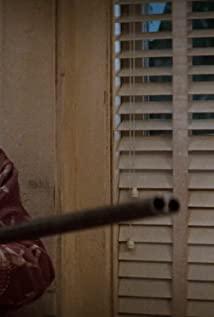De Palma has always been hailed as the "flatter and imitator" of the master of suspense Hitchcock. I believe this is unquestionable. You can see the tribute to the master in many of his works. "Furious Line" naturally can't escape the eyes of the audience, which can be seen from the restoration of the bathroom murder in "Terror" in the scenes of the scene at the beginning. But at the same time, his in-depth thinking about the film production itself can break the inherent impression of his own fandom complex to the audience, and this work is particularly prominent in thinking about the sound in the film.
This work shot in the 1980s, like the other two works of the same period, "Razor's Edge" and "Standby", shows the director's love for B-level films, whether it is the innocent and silly character design of the heroine in the play, or the killer sequence The depiction of the killing of three women surprisingly exposed the unrestrained taste for the subject of female abuse, and this is an important factor that caused the film's imbalance. This film tells the story of the male protagonist of the sound engineer who discovers a conspiracy during the recording process in the suburbs late at night, which leads to the narrative pattern of the political thriller type and involves the plot of the heroine and the killer behind the scenes. And the director boldly collaged this genre with the bloody torture genre, making the plot of the script trapped in complexity and vacillation.
De Palma’s attempts at film technology are breathtaking. Split-screen images, overhead shots, and long rotating shots of the male protagonist after he returned home and found that the tape was stolen. These should be regarded as groundbreaking author labels at the time. . And this film is far better than the sensual "Substitute" and the "Razor's Edge" which is addicted to the movie complex. It is nothing more than the discussion of the sound of the movie and the real sound source. From the very beginning, the male protagonist has been looking for a female scream for the B-level film in the play, and the whole film can be regarded as the just resistance he made after he was involved in a political conspiracy, but it ended in an anti-climax. The perfect female scream was found inside. Finally, returning to the post-production scene of the in-play in the opening scene, the heroine's screams when she was killed are matched with the in-play in the B-level film. The sound effects are perfect, but behind the voice there is the regret and guilt of the hero. . The B-level attribute of the play in the play seems to have predicted the genre tendency of the whole work, so from this perspective, it seems reasonable and reasonable to repeatedly show the murderer's portrayal of innocent women in the later plots. Therefore, rather than saying that this work is a tribute to Antonioni's "Zoom", it is better to say that the director used a very experimental method to create a meta-film about the dubbing of a B-level film behind the scenes.
View more about Blow Out reviews











